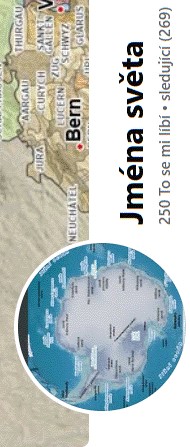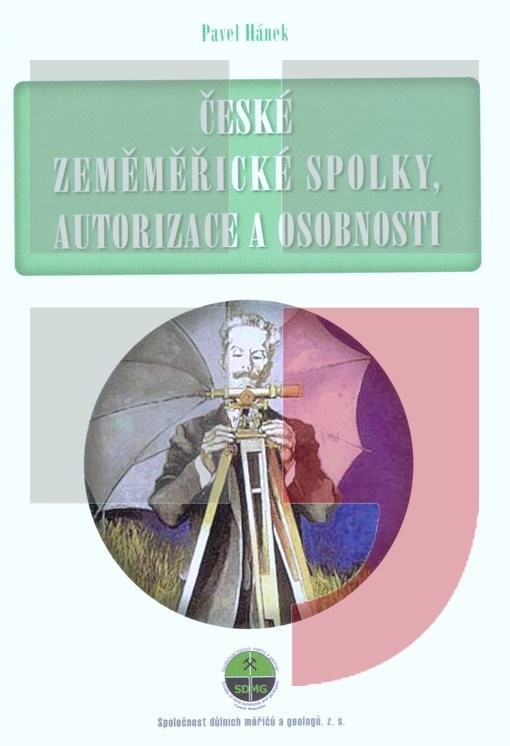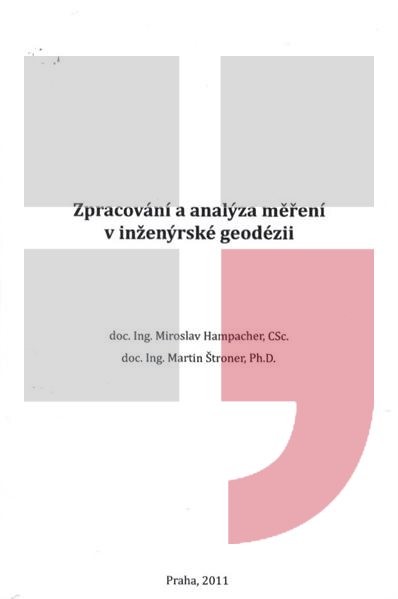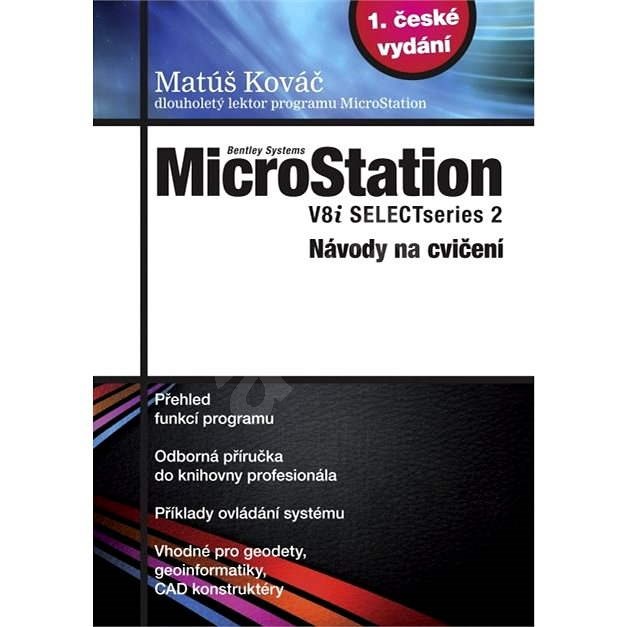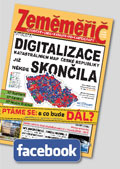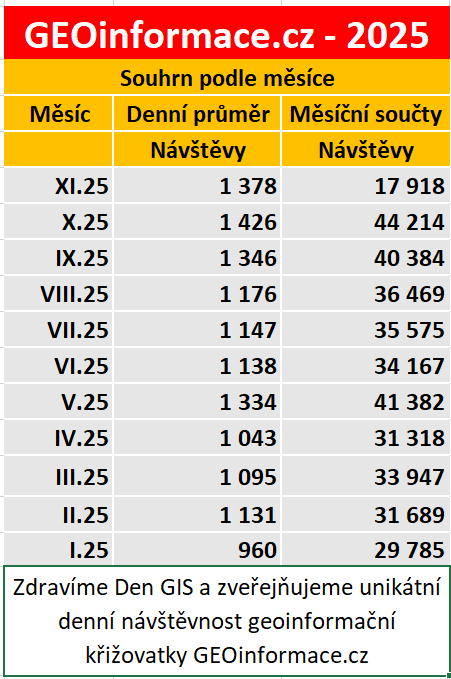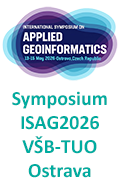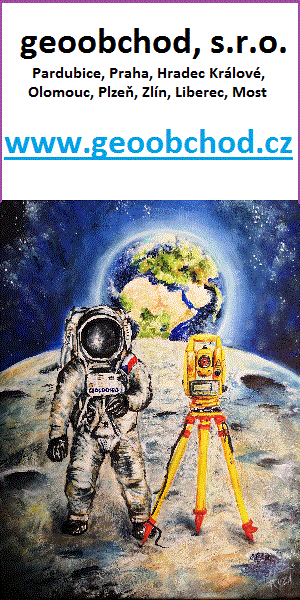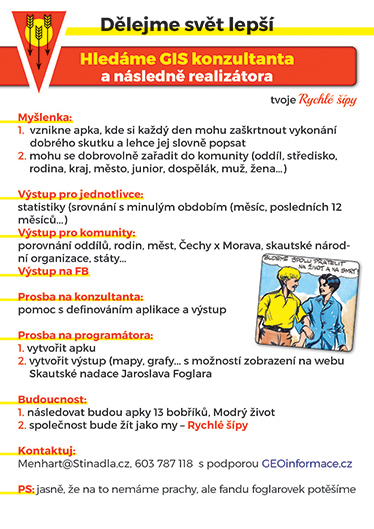zprávy
zdroje zpráv:20210119_Vedoucí oddělení právních vztahů k nemovitostem – odborný rada
19.1.2021 11:35 ČÚZK - předpisy a opatření Katastrální úřad pro Středočeský kraj - Katastrální pracoviště Benešov Vyhlášení výběrového řízení: Vedoucí oddělení právních vztahů k nemovitostem – odborný rada V části "Úřední deska", v sekci "Oznámení a jiná úřední sdělení" bylo vystaveno "Oznámení o vyhlášení výběrového řízení na obsazení služebního místa Vedoucí oddělení právních vztahů k nemovitostem – odborný rada"20210119_Vedoucí oddělení právních vztahů k nemovitostem – odborný rada
19.1.2021 11:35 ČÚZK /Urady/Katastralni-urady/Katastralni-urady/Katastralni-urad-pro-Stredocesky-kraj/Katastralni-pracoviste/KP-Benesov/O-uradu/Aktuality/20210113_odborny-rada,-reditel-Katastralniho-p-(1)Vedoucí oddělení právních vztahů k nemovitostem – odborný rada
19.1.2021 11:33 ČÚZK - volná místa Katastrální úřad pro Středočeský kraj - Katastrální pracoviště Benešov vypisuje výběrové řízení na místo Vedoucí oddělení právních vztahů k nemovitostem – odborný radaVedoucí oddělení právních vztahů k nemovitostem – odborný rada
19.1.2021 11:33 ČÚZK - předpisy a opatření Katastrální úřad pro Středočeský kraj - Katastrální pracoviště Benešovvypisuje výběrové řízení na místo Vedoucí oddělení právních vztahů k nemovitostem – odborný rada
Vedoucí oddělení právních vztahů k nemovitostem – odborný rada
Brand new subject – Impact of European Union Policies on Geosciences
19.1.2021 11:23 Katedra geoinformatiky UP OlomoucWe are offering you to sing into our brand new subject presenting practical linkage between EU & GeoSciences – Impact of European Union Policies on Geosciences (PRF/EUGEO) It is open for all geo-oriented students from Department of Geoinformatics, Department of geography and Department of Development & Environmental Studies Subject is supported by Erasmus+ Jean Monnet […]
The post Brand new subject – Impact of European Union Policies on Geosciences appeared first on Katedra geoinformatiky.
Brand new subject – Impact of European Union Policies on Geosciences
19.1.2021 11:23 Katedra geoinformatiky UP OlomoucWe are offering you to sign into our brand new subject presenting practical linkage between EU & GeoSciences – Impact of European Union Policies on Geosciences (PRF/EUGEO) It is open for all geo-oriented students from Department of Geoinformatics, Department of geography and Department of Development & Environmental Studies Subject is supported by Erasmus+ Jean Monnet […]
The post Brand new subject – Impact of European Union Policies on Geosciences appeared first on Katedra geoinformatiky.
20210119 - opatření proti vytěžování VDP
19.1.2021 10:07 ČÚZK - předpisy a opatření Vzhledem k opakovanému vytěžování VDP, které je v rozporu s podmínkami užívání aplikace, pro získání přístupu do Nahlížení do KN jsme byli nuceni upravit rozhraní aplikací. Ve VDP je nyní možné zobrazit údaje o vlastnictví až po potvrzení akce v dialogovém okně.20210119 - opatření proti vytěžování VDP
19.1.2021 10:07 ČÚZK /Uvod/Produkty-a-sluzby/RUIAN/RUIAN-novinky/2021/20210119-opatreni-proti-vytezovani-VDPZhodnocení investice do geodetických dat – Výstaviště České Budějovice a.s.
19.1.2021 9:18 GIS FórumTomTom Joins Autoware Foundation
19.1.2021 9:00 GISCafe.com Webcasts-Webinars AMSTERDAM, Jan. 20, 2021 (GLOBE NEWSWIRE) -- TomTom (TOM2), the leading independent location technology specialist, today announced that it has …Jak ušetřit 20% na AutoCADu (LT) a Revitu LT
19.1.2021 1:00 CAD Studio Ušetřete 20 % na Vašem novém CAD/BIM software - platí jen do 29.1. Váš nový CAD či BIM software Autodesk si nyní můžete pořídit levněji. V rámci krátké slevové promo akce můžete zakoupit o 20 % zvýhodněné 3leté subscription licence oblíbených CAD a ...American Robotics Becomes First Company Approved by the FAA To Operate Automated Drones Without Human Operators On-Site
18.1.2021 17:03 GISCafe.com Webcasts-Webinars A seminal milestone in the drone industry, American Robotics now meets the safety requirements needed to make drones scalable for widespread …OGC Members propose update to work of Features API Standards Working Group; public comment sought
18.1.2021 16:46 GISCafe.com Webcasts-Webinars Recharter of Features API SWG adds new work items for the group to continue the evolution of this important building block for location.Contact: …
Pracovník/pracovnice vztahů k veřejnosti a telefonista/ka
18.1.2021 16:24 ČÚZK - volná místa Zeměměřický úřad vypisuje výběrové řízení na místo Pracovník/pracovnice vztahů k veřejnosti a telefonista/kaPracovník/pracovnice vztahů k veřejnosti a telefonista/ka
18.1.2021 16:24 ČÚZK - předpisy a opatření Zeměměřický úřadvypisuje výběrové řízení na místo
Pracovník/pracovnice vztahů k veřejnosti a telefonista/ka
Pracovník/pracovnice vztahů k veřejnosti a telefonista/ka
18.1.2021 16:24 ČÚZK /Urady/Zememericky-urad/Volna-mista/Pracovnik-pracovnice-vztahu-k-verejnosti-a-telefonPracovník/pracovnice vztahů k veřejnosti a telefonista/ka
18.1.2021 16:24 Zeměměřický úřad Zeměměřický úřadvypisuje výběrové řízení na místo
Pracovník/pracovnice vztahů k veřejnosti a telefonista/ka
Domovník/domovnice
18.1.2021 16:21 ČÚZK - volná místa Zeměměřický úřad vypisuje výběrové řízení na místo Domovník/domovniceDomovník/domovnice
18.1.2021 16:21 ČÚZK - předpisy a opatření Zeměměřický úřadvypisuje výběrové řízení na místo
Domovník/domovnice
Domovník/domovnice
18.1.2021 16:21 Zeměměřický úřad Zeměměřický úřadvypisuje výběrové řízení na místo
Domovník/domovnice
20210118-VŘ Ředitel/ředitelka KÚ pro hlavní město Prahu
18.1.2021 16:20 ČÚZK - aktuality v resortu Oznámení o vyhlášení výběrového řízení na obsazení služebního místa ředitele/ředitelky Katastrálního úřadu pro hl. m. Prahu20210118-VŘ Ředitel/ředitelka KÚ pro hlavní město Prahu
18.1.2021 16:20 ČÚZK /Aktuality-resort/2021/20210118-VR-Reditel-reditelka-KU-pro-hlavni-mesto20210118-VŘ Ředitel/ředitelka KÚ pro hlavní město Prahu
18.1.2021 16:20 ČÚZK - předpisy a opatření Český úřad zeměměřický a katastrální zveřejnil novou aktualitu: Oznámení o vyhlášení výběrového řízení na obsazení služebního místa ředitele/ředitelky Katastrálního úřadu pro hl. m. PrahuArcGIS Field Maps
18.1.2021 15:54 blog ARCDATA ArcGIS Field Maps je nová mobilní aplikace. Ukážeme vám, k čemu ji můžete používat a jaké je její místo mezi ostatními mobilními aplikacemi Esri.Informace o výsledcích kontrol dle § 26 zákona č. 255/2012 Sb. za rok 2020
18.1.2021 15:53 ČÚZK - předpisy a opatření Zeměměřický a katastrální inspektorát v Pardubicíchvydává informace o výsledcích kontrol dle § 26 zákona č. 255/2012 Sb. za rok 2020
2020
20210118-VŘ ředitel/ředitelka
18.1.2021 15:50 ČÚZK - předpisy a opatření Český úřad zeměměřický a katastrální zveřejnil novou aktualitu: Oznámení o vyhlášení výběrového řízení na obsazení služebního místa ředitele/ředitelky Katastrálního úřadu pro hl. m. Prahu.20210118-VŘ ředitel/ředitelka
18.1.2021 15:50 ČÚZK - aktuality v resortu Oznámení o vyhlášení výběrového řízení na obsazení služebního místa ředitele/ředitelky Katastrálního úřadu pro hl. m. Prahu.20210118-VŘ ředitel/ředitelka
18.1.2021 15:50 ČÚZK /Aktuality-resort/2021/20210118-VR-reditel-reditelkaOdborný referent/vrchní referent v oddělení dokumentace KN na Katastrálním pracovišti Brno - město
18.1.2021 14:05 ČÚZK - volná místa Katastrální úřad pro Jihomoravský kraj Katastrální pracoviště Brno-město vypisuje výběrové řízení na místo Odborný referent/vrchní referent v oddělení dokumentace KN na Katastrálním pracovišti Brno - městoOdborný referent/vrchní referent v oddělení dokumentace KN na Katastrálním pracovišti Brno - město
18.1.2021 14:05 ČÚZK /Urady/Katastralni-urady/Katastralni-urady/Katastralni-urad-pro-Jihomoravsky-kraj/Uredni-deska/Oznameni-a-jina-uredni-sdeleni/Volna-mista/DMS/Odborny-referent-vrchni-referent-v-oddeleni-dokumeOdborný referent/vrchní referent v oddělení dokumentace KN na Katastrálním pracovišti Brno - město
18.1.2021 14:05 ČÚZK - předpisy a opatření Katastrální úřad pro Jihomoravský kraj Katastrální pracoviště Brno-městovypisuje výběrové řízení na místo
Odborný referent/vrchní referent v oddělení dokumentace KN na Katastrálním pracovišti Brno - město
Space synergies key for EUSPA
18.1.2021 13:59 European GNSS Agency
One of the main motivations behind the creation of the European Union Agency for the Space Programme (EUSPA) is to generate synergies between the different components of the EU Space Programme, particularly navigation, Earth observation and secure communications, according to European GNSS Agency (GSA) Executive Director Rodrigo da Costa.
In his keynote address at a session on ‘Space data and downstream applications’ at the 13th European Space Conference on 12 January, da Costa noted that EUSPA is an opportunity for the EU Space Programme and for Europe as a whole, as it will enable the creation of synergies between navigation (EGNOS and Galileo), earth observation (Copernicus) and telecommunications (GOVSATCOM).
EUSPA will maximise its contribution to the EU Space Programme being the organisation that puts European Union space assets at the service of its citizens, he said. This was something that was also underlined by other participants in this session.
Da Costa noted for example the potential for synergies between navigation and Earth observation in transport and agriculture. “By bringing navigation and earth observation together we can bring transport one step ahead, and do the same in agriculture, thereby making a big contribution to the Green Deal,” he said.
Aligned with EU priorities
The EU Space Programme is instrumental for the EU´s key policy areas – be it the Green Deal, Digitisation or contributing to a greener and stronger economy in Europe in general. “We are very closely aligned with the priorities of the EU. For instance, Galileo and EGNOS already make an important contribution to a greener environmental footprint,” da Costa said, citing the example of precision agriculture, where an increased number of tractors equipped with EGNOS and Galileo are helping to improve environmental performance in the sector.
Read this: Users benefitting from Galileo accuracy in latest Javad receivers
Da Costa concluded: “EUSPA will not just be a bigger GSA. It is a new agency that will benefit from the GSA’s experience and will work closely with its partners in the European Commission, the European Space Agency and in industry.”
Pandemic response
Due to the COVID pandemic, this year’s Space Conference took place online and the pandemic was very much in focus. Asked about the GSA’s response, da Costa said that the Agency had taken action to ensure the safe and secure continuity of operations for Galileo and EGNOS and to support SMEs and start-ups, making sure that the flow of funding to support innovation continued.
Moreover, concrete initiatives like the Galileo Green Lane app, implemented jointly with the European Commission, eased the management of traffic congestion at EU borders during the crisis and helped to mitigate its impacts and keep critical goods flowing. “We will have to come back from the crisis with an economy that is more resilient, more robust and greener. The space programme will have a very significant role to play in this,” da Costa said, adding that space technologies are important for the economy, as they add value in practically all sectors.
And this: GSA launches call for Venture Capitalists
Da Costa also spoke amongst others with Thomas Dermine, Belgian State Secretary for Economic Recovery and Strategic Investments, in a session on “Enhancement of European Space Asset Cyber Resilience’’. Underlining the operational experience gained by the GSA for EGNOS and Galileo, da Costa stressed that security of the space assets is essential for the development of the EU Space Programme and that, as an EU agency in the forefront of the implementation of the EU Space Programme, the GSA was already concretely following the EU rules in this regard. “Cybersecurity is complex and requires monitoring 24/7. This is what we are doing with the Galileo Security Monitoring Centre,” he said.
EGNSS for energy
At a session on ‘Space for Energy, and Clean Energy for Space,’ GSA Head of Market Development Fiammetta Diani spoke about the role of Galileo in the energy sector, touching on areas such as the synchronisation of energy networks and the importance of accuracy and robustness in smart grids that help distributing more and more energy from renewable sources. Diani also stressed the importance of synergies between EGNSS and Copernicus in the energy sector, to improve the site selection, construction, operation and maintenance of wind farms, for example.
“EUSPA will further foster the use of space technologies for the energy sector, for example by offering innovation opportunities for start-ups, implementing new business models for this fast changing domain, and creating Galileo-Copernicus solutions to increase renewable energy production and distribution, as an important contribution to the European Green Deal,” she said.
Media note: This feature can be republished without charge provided the European GNSS Agency (GSA) is acknowledged as the source at the top or the bottom of the story. You must request permission before you use any of the photographs on the site. If you republish, we would be grateful if you could link back to the GSA website (http://www.gsa.europa.eu).
Space synergies key for EUSPA
18.1.2021 13:59 European GNSS Agency
One of the main motivations behind the creation of the European Union Agency for the Space Programme (EUSPA) is to generate synergies between the different components of the EU Space Programme, particularly navigation, Earth observation and secure communications, according to European GNSS Agency (GSA) Executive Director Rodrigo da Costa.
In his keynote address at a session on ‘Space data and downstream applications’ at the 13th European Space Conference on 12 January, da Costa noted that EUSPA is an opportunity for the EU Space Programme and for Europe as a whole, as it will enable the creation of synergies between navigation (EGNOS and Galileo), earth observation (Copernicus) and telecommunications (GOVSATCOM).
EUSPA will maximise its contribution to the EU Space Programme being the organisation that puts European Union space assets at the service of its citizens, he said. This was something that was also underlined by other participants in this session.
Da Costa noted for example the potential for synergies between navigation and Earth observation in transport and agriculture. “By bringing navigation and earth observation together we can bring transport one step ahead, and do the same in agriculture, thereby making a big contribution to the Green Deal,” he said.
Aligned with EU priorities
The EU Space Programme is instrumental for the EU´s key policy areas – be it the Green Deal, Digitisation or contributing to a greener and stronger economy in Europe in general. “We are very closely aligned with the priorities of the EU. For instance, Galileo and EGNOS already make an important contribution to a greener environmental footprint,” da Costa said, citing the example of precision agriculture, where an increased number of tractors equipped with EGNOS and Galileo are helping to improve environmental performance in the sector.
Read this: Users benefitting from Galileo accuracy in latest Javad receivers
Da Costa concluded: “EUSPA will not just be a bigger GSA. It is a new agency that will benefit from the GSA’s experience and will work closely with its partners in the European Commission, the European Space Agency and in industry.”
Pandemic response
Due to the COVID pandemic, this year’s Space Conference took place online and the pandemic was very much in focus. Asked about the GSA’s response, da Costa said that the Agency had taken action to ensure the safe and secure continuity of operations for Galileo and EGNOS and to support SMEs and start-ups, making sure that the flow of funding to support innovation continued.
Moreover, concrete initiatives like the Galileo Green Lane app, implemented jointly with the European Commission, eased the management of traffic congestion at EU borders during the crisis and helped to mitigate its impacts and keep critical goods flowing. “We will have to come back from the crisis with an economy that is more resilient, more robust and greener. The space programme will have a very significant role to play in this,” da Costa said, adding that space technologies are important for the economy, as they add value in practically all sectors.
And this: GSA launches call for Venture Capitalists
Da Costa also spoke amongst others with Thomas Dermine, Belgian State Secretary for Economic Recovery and Strategic Investments, in a session on “Enhancement of European Space Asset Cyber Resilience’’. Underlining the operational experience gained by the GSA for EGNOS and Galileo, da Costa stressed that security of the space assets is essential for the development of the EU Space Programme and that, as an EU agency in the forefront of the implementation of the EU Space Programme, the GSA was already concretely following the EU rules in this regard. “Cybersecurity is complex and requires monitoring 24/7. This is what we are doing with the Galileo Security Monitoring Centre,” he said.
EGNSS for energy
At a session on ‘Space for Energy, and Clean Energy for Space,’ GSA Head of Market Development Fiammetta Diani spoke about the role of Galileo in the energy sector, touching on areas such as the synchronisation of energy networks and the importance of accuracy and robustness in smart grids that help distributing more and more energy from renewable sources. Diani also stressed the importance of synergies between EGNSS and Copernicus in the energy sector, to improve the site selection, construction, operation and maintenance of wind farms, for example.
“EUSPA will further foster the use of space technologies for the energy sector, for example by offering innovation opportunities for start-ups, implementing new business models for this fast changing domain, and creating Galileo-Copernicus solutions to increase renewable energy production and distribution, as an important contribution to the European Green Deal,” she said.
Media note: This feature can be republished without charge provided the European GNSS Agency (GSA) is acknowledged as the source at the top or the bottom of the story. You must request permission before you use any of the photographs on the site. If you republish, we would be grateful if you could link back to the GSA website (http://www.gsa.europa.eu).
Space synergies key for EUSPA
18.1.2021 13:59 European GNSS Agency
One of the main motivations behind the creation of the European Union Agency for the Space Programme (EUSPA) is to generate synergies between the different components of the EU Space Programme, particularly navigation, Earth observation and secure communications, according to European GNSS Agency (GSA) Executive Director Rodrigo da Costa.
In his keynote address at a session on ‘Space data and downstream applications’ at the 13th European Space Conference on 12 January, da Costa noted that EUSPA is an opportunity for the EU Space Programme and for Europe as a whole, as it will enable the creation of synergies between navigation (EGNOS and Galileo), earth observation (Copernicus) and telecommunications (GOVSATCOM).
EUSPA will maximise its contribution to the EU Space Programme being the organisation that puts European Union space assets at the service of its citizens, he said. This was something that was also underlined by other participants in this session.
Da Costa noted for example the potential for synergies between navigation and Earth observation in transport and agriculture. “By bringing navigation and earth observation together we can bring transport one step ahead, and do the same in agriculture, thereby making a big contribution to the Green Deal,” he said.
Aligned with EU priorities
The EU Space Programme is instrumental for the EU´s key policy areas – be it the Green Deal, Digitisation or contributing to a greener and stronger economy in Europe in general. “We are very closely aligned with the priorities of the EU. For instance, Galileo and EGNOS already make an important contribution to a greener environmental footprint,” da Costa said, citing the example of precision agriculture, where an increased number of tractors equipped with EGNOS and Galileo are helping to improve environmental performance in the sector.
Read this: Users benefitting from Galileo accuracy in latest Javad receivers
Da Costa concluded: “EUSPA will not just be a bigger GSA. It is a new agency that will benefit from the GSA’s experience and will work closely with its partners in the European Commission, the European Space Agency and in industry.”
Pandemic response
Due to the COVID pandemic, this year’s Space Conference took place online and the pandemic was very much in focus. Asked about the GSA’s response, da Costa said that the Agency had taken action to ensure the safe and secure continuity of operations for Galileo and EGNOS and to support SMEs and start-ups, making sure that the flow of funding to support innovation continued.
Moreover, concrete initiatives like the Galileo Green Lane app, implemented jointly with the European Commission, eased the management of traffic congestion at EU borders during the crisis and helped to mitigate its impacts and keep critical goods flowing. “We will have to come back from the crisis with an economy that is more resilient, more robust and greener. The space programme will have a very significant role to play in this,” da Costa said, adding that space technologies are important for the economy, as they add value in practically all sectors.
And this: GSA launches call for Venture Capitalists
Da Costa also spoke amongst others with Thomas Dermine, Belgian State Secretary for Economic Recovery and Strategic Investments, in a session on “Enhancement of European Space Asset Cyber Resilience’’. Underlining the operational experience gained by the GSA for EGNOS and Galileo, da Costa stressed that security of the space assets is essential for the development of the EU Space Programme and that, as an EU agency in the forefront of the implementation of the EU Space Programme, the GSA was already concretely following the EU rules in this regard. “Cybersecurity is complex and requires monitoring 24/7. This is what we are doing with the Galileo Security Monitoring Centre,” he said.
EGNSS for energy
At a session on ‘Space for Energy, and Clean Energy for Space,’ GSA Head of Market Development Fiammetta Diani spoke about the role of Galileo in the energy sector, touching on areas such as the synchronisation of energy networks and the importance of accuracy and robustness in smart grids that help distributing more and more energy from renewable sources. Diani also stressed the importance of synergies between EGNSS and Copernicus in the energy sector, to improve the site selection, construction, operation and maintenance of wind farms, for example.
“EUSPA will further foster the use of space technologies for the energy sector, for example by offering innovation opportunities for start-ups, implementing new business models for this fast changing domain, and creating Galileo-Copernicus solutions to increase renewable energy production and distribution, as an important contribution to the European Green Deal,” she said.
Media note: This feature can be republished without charge provided the European GNSS Agency (GSA) is acknowledged as the source at the top or the bottom of the story. You must request permission before you use any of the photographs on the site. If you republish, we would be grateful if you could link back to the GSA website (http://www.gsa.europa.eu).
Výběrové řízení
18.1.2021 13:58 ČÚZK - předpisy a opatření Katastrální úřad pro Plzeňský kraj - Katastrální pracoviště Plzeň-město zveřejnil novou aktualitu: Ředitelka Katastrálního úřadu pro Plzeňský kraj vyhlašuje výběrové řízení na služební místo odborný referent/vrchní referent – návrh zápisu v katastru NZK1006, oddělení aktualizace KN, Katastrální úřad pro Plzeňský kraj, Katastrální pracoviště Plzeň-město.Výběrové řízení na pozici odborný referent/vrchní referent – návrh zápisu v katastru NZK1006
18.1.2021 13:49 ČÚZK - předpisy a opatření Katastrální úřad pro Plzeňský kraj Katastrální pracoviště Plzeň-městovypisuje výběrové řízení na místo
Výběrové řízení na pozici odborný referent/vrchní referent – návrh zápisu v katastru NZK1006
Výběrové řízení na pozici odborný referent/vrchní referent – návrh zápisu v katastru NZK1006
18.1.2021 13:49 ČÚZK - volná místa Katastrální úřad pro Plzeňský kraj Katastrální pracoviště Plzeň-město vypisuje výběrové řízení na místo Výběrové řízení na pozici odborný referent/vrchní referent – návrh zápisu v katastru NZK1006Výběrové řízení na pozici odborný referent/vrchní referent – návrh zápisu v katastru NZK1006
18.1.2021 13:49 ČÚZK /Urady/Katastralni-urady/Katastralni-urady/Katastralni-urad-pro-Plzensky-kraj/Uredni-deska/Oznameni-a-jina-uredni-sdeleni/Volna-mista/DMS/Vyberove-rizeni-na-pozici-odborny-referent-vrchniZveřejnění obsahu informací poskytnutých na žádost dle zákona č. 106/1999 Sb. za rok 2021
18.1.2021 13:44 ČÚZK - předpisy a opatření Katastrální úřad pro Vysočinuzveřejňuje obsah informace poskytnutých na žádost dle zákona č. 106/1999 Sb. za rok
2021
Zveřejnění obsahu informací poskytnutých na žádost dle zákona č. 106/1999 Sb. za rok 2021
18.1.2021 13:44 ČÚZK /Urady/Katastralni-urady/Katastralni-urady/Katastralni-urad-pro-Vysocinu/Casto-hledane-informace/Poskytovani-informaci-106-1999-Sb/Zverejneni-obsahu-informaci-poskytnutych-na-za-(1)/Zverejneni-obsahu-informaci-poskytnutych-na-za-(3)Rada/odborný rada v oddělení právním na Katastrálním pracovišti Brno - venkov
18.1.2021 13:44 ČÚZK - předpisy a opatření Katastrální úřad pro Jihomoravský kraj Katastrální pracoviště Brno-venkovvypisuje výběrové řízení na místo
Rada/odborný rada v oddělení právním na Katastrálním pracovišti Brno - venkov
Rada/odborný rada v oddělení právním na Katastrálním pracovišti Brno - venkov
18.1.2021 13:44 ČÚZK /Urady/Katastralni-urady/Katastralni-urady/Katastralni-urad-pro-Jihomoravsky-kraj/Uredni-deska/Oznameni-a-jina-uredni-sdeleni/Volna-mista/DMS/Rada-odborny-rada-v-oddeleni-pravnim-na-Katast-(1)Rada/odborný rada v oddělení právním na Katastrálním pracovišti Brno - venkov
18.1.2021 13:44 ČÚZK - volná místa Katastrální úřad pro Jihomoravský kraj Katastrální pracoviště Brno-venkov vypisuje výběrové řízení na místo Rada/odborný rada v oddělení právním na Katastrálním pracovišti Brno - venkovVýroční zpráva dle zákona č. 106/1999 Sb. za rok 2020
18.1.2021 13:42 ČÚZK - předpisy a opatření Katastrální úřad pro Vysočinuvydává výroční zprávu úřadu za rok
2020
Minulý týden se konala členská schůze Aliance
18.1.2021 13:42 UAVAMinulý týden ve čtvrtek 14.1.2021 se konala členská schůze Aliance online formou, která je pro členy nahrána na youtube kanál Aliance. Hlavní diskuze se věnovala plánovaným akcím v roce 2021, kde mezi hlavní akce bude patřit již 6. konference Aliance, dále se můžeme těšit na Dronfest 2021 v Plzni, český stánek na Commercial UAV Expo […]
The post Minulý týden se konala členská schůze Aliance appeared first on UAV Aliance pro bezpilotní letecký průmysl.
Výroční zpráva dle zákona č. 106/1999 Sb. za rok 2020
18.1.2021 13:42 ČÚZK /Urady/Katastralni-urady/Katastralni-urady/Katastralni-urad-pro-Vysocinu/Vyrocni-zpravy/Vyrocni-zprava-dle-zakona-c-106-1999-Sb-za-rok-(2)Rozpočet úřadu za rok 2021
18.1.2021 13:39 ČÚZK /Urady/Katastralni-urady/Katastralni-urady/Katastralni-urad-pro-Vysocinu/Rozpocet/Rozpocet-uradu-za-rok-2021Rozpočet úřadu za rok 2021
18.1.2021 13:39 ČÚZK - předpisy a opatření Katastrální úřad pro Vysočinuvystavuje rozpočet úřadu za rok
2021
Vrchní referent/rada v oddělení právních vztahů k nemovitostem na Katastrálním pracovišti Hodonín
18.1.2021 13:37 ČÚZK - předpisy a opatření Katastrální úřad pro Jihomoravský kraj Katastrální pracoviště Hodonínvypisuje výběrové řízení na místo
Vrchní referent/rada v oddělení právních vztahů k nemovitostem na Katastrálním pracovišti Hodonín
Vrchní referent/rada v oddělení právních vztahů k nemovitostem na Katastrálním pracovišti Hodonín
18.1.2021 13:37 ČÚZK - volná místa Katastrální úřad pro Jihomoravský kraj Katastrální pracoviště Hodonín vypisuje výběrové řízení na místo Vrchní referent/rada v oddělení právních vztahů k nemovitostem na Katastrálním pracovišti HodonínVrchní referent/rada v oddělení právních vztahů k nemovitostem na Katastrálním pracovišti Hodonín
18.1.2021 13:37 ČÚZK /Urady/Katastralni-urady/Katastralni-urady/Katastralni-urad-pro-Jihomoravsky-kraj/Uredni-deska/Oznameni-a-jina-uredni-sdeleni/Volna-mista/DMS/Vrchni-referent-rada-v-oddeleni-pravnich-vztahu-k
Nové číslo GaKO
18.1.2021 13:15
ÚGKK SR
Nové číslo časopisu Geodetického a Kartografického Obzoru 01/2021
20210915-GaKO-9-2021
18.1.2021 12:22 ČÚZK - předpisy a opatření Český úřad zeměměřický a katastrální zveřejnil novou aktualitu: Aktuální číslo Geodetického a kartografického obzoru (9/2021) je k dispozici ke stažení.20210420-GaKO-4-2021
18.1.2021 12:22 ČÚZK - aktuality v resortu Aktuální číslo Geodetického a kartografického obzoru (4/2021) je k dispozici ke stažení.20210118-GaKO-1-2021
18.1.2021 12:22 ČÚZK - aktuality v resortu Aktuální číslo Geodetického a kartografického obzoru (1/2021) je k dispozici ke stažení.20211213-GaKO-12-2021
18.1.2021 12:22 ČÚZK - aktuality v resortu Aktuální číslo Geodetického a kartografického obzoru (12/2021) je k dispozici ke stažení.20210420-GaKO-5-2021
18.1.2021 12:22 ČÚZK - předpisy a opatření Český úřad zeměměřický a katastrální zveřejnil novou aktualitu: Aktuální číslo Geodetického a kartografického obzoru (5/2021) je k dispozici ke stažení.20211115-GaKO-11-2021
18.1.2021 12:22 ČÚZK - aktuality v resortu Aktuální číslo Geodetického a kartografického obzoru (11/2021) je k dispozici ke stažení.20210211-GaKO-2-2021
18.1.2021 12:22 ČÚZK - aktuality v resortu Aktuální číslo Geodetického a kartografického obzoru (2/2021) je k dispozici ke stažení.20210211-GaKO-3-2021
18.1.2021 12:22 ČÚZK - předpisy a opatření Český úřad zeměměřický a katastrální zveřejnil novou aktualitu: Aktuální číslo Geodetického a kartografického obzoru (3/2021) je k dispozici ke stažení.20210118-GaKO-1-2021
18.1.2021 12:22 ČÚZK - předpisy a opatření Český úřad zeměměřický a katastrální zveřejnil novou aktualitu: Aktuální číslo Geodetického a kartografického obzoru (1/2021) je k dispozici ke stažení.20210118-GaKO-1-2021
18.1.2021 12:22 ČÚZK - předpisy a opatření Český úřad zeměměřický a katastrální zveřejnil novou aktualitu: Aktuální číslo Geodetického a kartografického obzoru (1/2021) je k dispozici ke stažení.20210118-GaKO-1-2021
18.1.2021 12:22 ČÚZK - předpisy a opatření Český úřad zeměměřický a katastrální zveřejnil novou aktualitu: Aktuální číslo Geodetického a kartografického obzoru (1/2021) je k dispozici ke stažení.20210615-GaKO-6-2021
18.1.2021 12:22 ČÚZK - aktuality v resortu Aktuální číslo Geodetického a kartografického obzoru (6/2021) je k dispozici ke stažení.20211014-GaKO-10-2021
18.1.2021 12:22 ČÚZK - aktuality v resortu Aktuální číslo Geodetického a kartografického obzoru (10/2021) je k dispozici ke stažení.20210211-GaKO-3-2021
18.1.2021 12:22 ČÚZK - aktuality v resortu Aktuální číslo Geodetického a kartografického obzoru (3/2021) je k dispozici ke stažení.20210211-GaKO-2-2021
18.1.2021 12:22 ČÚZK - předpisy a opatření Český úřad zeměměřický a katastrální zveřejnil novou aktualitu: Aktuální číslo Geodetického a kartografického obzoru (2/2021) je k dispozici ke stažení.20211014-GaKO-10-2021
18.1.2021 12:22 ČÚZK - předpisy a opatření Český úřad zeměměřický a katastrální zveřejnil novou aktualitu: Aktuální číslo Geodetického a kartografického obzoru (10/2021) je k dispozici ke stažení.20211115-GaKO-11-2021
18.1.2021 12:22 ČÚZK - předpisy a opatření Český úřad zeměměřický a katastrální zveřejnil novou aktualitu: Aktuální číslo Geodetického a kartografického obzoru (11/2021) je k dispozici ke stažení.20210118-GaKO-1-2021
18.1.2021 12:22 ČÚZK - aktuality v resortu Aktuální číslo Geodetického a kartografického obzoru (1/2021) je k dispozici ke stažení.20210420-GaKO-5-2021
18.1.2021 12:22 ČÚZK - aktuality v resortu Aktuální číslo Geodetického a kartografického obzoru (5/2021) je k dispozici ke stažení.20210118-GaKO-1-2021
18.1.2021 12:22 ČÚZK - předpisy a opatření Český úřad zeměměřický a katastrální zveřejnil novou aktualitu: Aktuální číslo Geodetického a kartografického obzoru (1/2021) je k dispozici ke stažení.20210816-GaKO-8-2021
18.1.2021 12:22 ČÚZK - předpisy a opatření Český úřad zeměměřický a katastrální zveřejnil novou aktualitu: Aktuální číslo Geodetického a kartografického obzoru (8/2021) je k dispozici ke stažení.20210420-GaKO-4-2021
18.1.2021 12:22 ČÚZK - předpisy a opatření Český úřad zeměměřický a katastrální zveřejnil novou aktualitu: Aktuální číslo Geodetického a kartografického obzoru (4/2021) je k dispozici ke stažení.20211213-GaKO-12-2021
18.1.2021 12:22 ČÚZK - aktuality v resortu Aktuální číslo Geodetického a kartografického obzoru (12/2021) je k dispozici ke stažení.20210118-GaKO-1-2021
18.1.2021 12:22 ČÚZK - aktuality v resortu Aktuální číslo Geodetického a kartografického obzoru (1/2021) je k dispozici ke stažení.20210118-GaKO-1-2021
18.1.2021 12:22 ČÚZK - aktuality v resortu Aktuální číslo Geodetického a kartografického obzoru (1/2021) je k dispozici ke stažení.20210714-GaKO-7-2021
18.1.2021 12:22 ČÚZK - předpisy a opatření Český úřad zeměměřický a katastrální zveřejnil novou aktualitu: Aktuální číslo Geodetického a kartografického obzoru (7/2021) je k dispozici ke stažení.20210714-GaKO-7-2021
18.1.2021 12:22 ČÚZK - aktuality v resortu Aktuální číslo Geodetického a kartografického obzoru (7/2021) je k dispozici ke stažení.20210816-GaKO-8-2021
18.1.2021 12:22 ČÚZK - aktuality v resortu Aktuální číslo Geodetického a kartografického obzoru (8/2021) je k dispozici ke stažení.20210915-GaKO-9-2021
18.1.2021 12:22 ČÚZK - aktuality v resortu Aktuální číslo Geodetického a kartografického obzoru (9/2021) je k dispozici ke stažení.20210615-GaKO-6-2021
18.1.2021 12:22 ČÚZK - předpisy a opatření Český úřad zeměměřický a katastrální zveřejnil novou aktualitu: Aktuální číslo Geodetického a kartografického obzoru (6/2021) je k dispozici ke stažení.20211213-GaKO-12-2021
18.1.2021 12:22 ČÚZK - předpisy a opatření Český úřad zeměměřický a katastrální zveřejnil novou aktualitu: Aktuální číslo Geodetického a kartografického obzoru (12/2021) je k dispozici ke stažení.Záznamy z virtuální Konference GIS Esri v ČR 2020 jsou již dostupné na YouTube
18.1.2021 10:37 ARCDATANa podzim roku 2020 se největší oborové setkání geoinformatiků muselo uskutečnit virtuální formou. Náplň Konference GIS Esri v ČR byla proto rozložena do 14 hodin živého vysílání, 15 předtočených přednášek od uživatelů a partnerů a na galerii 20 map a mapových aplikací.
Nyní prostřednictvím našeho YouTube kanálu přinášíme všem zájemcům záznamy zahájení a hlavních řečníkůkonference, technologického bloku, přednášky ze sekce veřejné správy včetně panelové diskuse o DTM, sekci určenou správcům inženýrských sítí, všech 6 workshopů a 15 uživatelských přednášek.
Podrobnější informace o programu Konference GIS Esri v ČR 2020 se dočtete na webových stránkách konference.
Rozpočet úřadu za rok 2021
18.1.2021 10:32 ČÚZK - předpisy a opatření Zeměměřický úřadvystavuje rozpočet úřadu za rok
2021
Rozpočet úřadu za rok 2021
18.1.2021 10:32 Zeměměřický úřad Zeměměřický úřadvystavuje rozpočet úřadu za rok
2021
Rozpočet úřadu za rok 2021
18.1.2021 10:32 ČÚZK /Urady/Zememericky-urad/Rozpocty/Rozpocet-uradu-za-rok-2021ODSTÁVKA MAPOVÝCH SLUŽEB
18.1.2021 9:10 Plzeňský kraj Došlo k odstávce interaktivních mapových aplikací v technologii Adobe Flash. Mapy budou postupně upravovány a během následujících 14 dnů opět spouštěny. Za vzniklé potíže se omlouváme.20210118 – volné místo - Domovník KP Děčín
18.1.2021 8:28 ČÚZK - předpisy a opatření Katastrální úřad pro Ústecký kraj - Katastrální pracoviště Děčín zveřejnil novou aktualitu: Nabídka volného pracovního místa - Domovník KP Děčín20210118 – volné místo - Domovník KP Děčín
18.1.2021 8:28 ČÚZK /Urady/Katastralni-urady/Katastralni-urady/Katastralni-urad-pro-Ustecky-kraj/O-uradu/Aktuality/20210118-–-volne-misto-Domovnik-KP-DecinDomovník KP Děčín
18.1.2021 8:23 ČÚZK - volná místa Katastrální úřad pro Ústecký kraj Katastrální pracoviště Děčín vypisuje výběrové řízení na místo Domovník KP DěčínDomovník KP Děčín
18.1.2021 8:23 ČÚZK - předpisy a opatření Katastrální úřad pro Ústecký kraj Katastrální pracoviště Děčínvypisuje výběrové řízení na místo
Domovník KP Děčín
Domovník KP Děčín
18.1.2021 8:23 ČÚZK /Urady/Katastralni-urady/Katastralni-urady/Katastralni-urad-pro-Ustecky-kraj/Volna-mista/DMS/Domovnik-KP-Decinzměna úředních hodin
18.1.2021 8:20 ČÚZK - předpisy a opatření Katastrální úřad pro Liberecký kraj - Katastrální pracoviště Frýdlant zveřejnil novou aktualitu:S ohledem na epidemiologickou situaci se mění úřední hodiny pro veřejnost
pondělí 18.1.2021 na 8-13hod. (12-17 hod. lze využít sběrný box)
středa 20.1.2021 na 12-17 hod. (8-12 hod. lze využít sběrný box)
Ostatní dny sběrný box úterý a čtvrtek 8-14 hod., pátek 8-12 hod.
Upřednostňujeme bezhotovostní platbu.
Děkujeme za pochopení
změna úředních hodin
18.1.2021 8:20 ČÚZK - předpisy a opatření Katastrální úřad pro Liberecký kraj - Katastrální pracoviště Frýdlant zveřejnil novou aktualitu:S ohledem na epidemiologickou situaci se mění úřední hodiny pro veřejnost
pondělí 18.1.2021 na 8-13hod. (12-17 hod. lze využít sběrný box)
středa 20.1.2021 na 12-17 hod. (8-12 hod. lze využít sběrný box)
Ostatní dny sběrný box úterý a čtvrtek 8-14 hod., pátek 8-12 hod.
Upřednostňujeme bezhotovostní platbu.
Děkujeme za pochopení
změna úředních hodin
18.1.2021 8:20 ČÚZK - předpisy a opatření Katastrální úřad pro Liberecký kraj - Katastrální pracoviště Frýdlant zveřejnil novou aktualitu:S ohledem na epidemiologickou situaci se mění úřední hodiny pro veřejnost
pondělí 25.1.2021 na 8-13hod. (13-17 hod. lze využít sběrný box)
středa 27.1.2021 na 12-17 hod. (8-12 hod. lze využít sběrný box)
Ostatní dny sběrný box úterý a čtvrtek 8-14 hod., pátek 8-12 hod.
Upřednostňujeme bezhotovostní platbu.
Děkujeme za pochopení
změna úředních hodin
18.1.2021 8:20 ČÚZK - předpisy a opatření Katastrální úřad pro Liberecký kraj - Katastrální pracoviště Frýdlant zveřejnil novou aktualitu:S ohledem na epidemiologickou situaci se mění úřední hodiny pro veřejnost
pondělí 8-13 hod. (13-17 hod. lze využít sběrný box)
středa 12-17 hod. (8-12 hod. lze využít sběrný box)
Ostatní dny sběrný box úterý a čtvrtek 8-14 hod., pátek 8-12 hod.
Upřednostňujeme bezhotovostní platbu.
Děkujeme za pochopení
změna úředních hodin
18.1.2021 8:20 ČÚZK - předpisy a opatření Katastrální úřad pro Liberecký kraj - Katastrální pracoviště Frýdlant zveřejnil novou aktualitu:S ohledem na epidemiologickou situaci se mění úřední hodiny pro veřejnost
pondělí 1.2.2021 na 8-13hod. (13-17 hod. lze využít sběrný box)
středa 3.2.2021 na 12-17 hod. (8-12 hod. lze využít sběrný box)
Ostatní dny sběrný box úterý a čtvrtek 8-14 hod., pátek 8-12 hod.
Upřednostňujeme bezhotovostní platbu.
Děkujeme za pochopení
změna úředních hodin
18.1.2021 8:20 ČÚZK /Urady/Katastralni-urady/Katastralni-urady/Katastralni-urad-pro-Liberecky-kraj/Katastralni-pracoviste/KP-Frydlant/O-uradu/Aktuality/zmena-urednich-hodinRozhovor s Ing. Tomášem Mačkem
18.1.2021 0:00 Státní pozemkový úřad Ač příroda bývá často nazývána mocnou čarodějkou, sama na všechno prostě nestačí. S rozsáhlou stavební činností se navíc, především v okolí obcí, neustále zmenšuje přirozený životní prostor pro zvěř. Je tedy ve veřejném zájmu prostorově a majetkově uspořádávat vlastnická práva a s nimi související věcná břemena. Jedním z klíčových nástrojů pro rozvoj venkova jsou tzv. pozemkové úpravy. Ty navíc vytvářejí příznivé podmínky pro racionalizaci zemědělské výroby, přispívají k ochraně a tvorbě krajiny, a často také zlepšují hospodaření s vodou v ní.Rozhovor s Ing. Tomášem Mačkem
18.1.2021 0:00 Státní pozemkový úřad Ač příroda bývá často nazývána mocnou čarodějkou, sama na všechno prostě nestačí. S rozsáhlou stavební činností se navíc, především v okolí obcí, neustále zmenšuje přirozený životní prostor pro zvěř. Je tedy ve veřejném zájmu prostorově a majetkově uspořádávat vlastnická práva a s nimi související věcná břemena. Jedním z klíčových nástrojů pro rozvoj venkova jsou tzv. pozemkové úpravy. Ty navíc vytvářejí příznivé podmínky pro racionalizaci zemědělské výroby, přispívají k ochraně a tvorbě krajiny, a často také zlepšují hospodaření s vodou v ní.Satlab’s new LiDar solutions increase productivity for survey and engineering…
16.1.2021 16:56 Satlab GeosolutionsThe post Satlab’s new LiDar solutions increase productivity for survey and engineering… appeared first on SatLab – Global Satellite Positioning Solutions.
TurboCAD PLATINUM 27 CZ v akční ceně do 04. 01. 2021
15.1.2021 18:09 ŠPINAR - softwareVážení zákazníci,
dovolujeme si Vám nabídnout program TurboCAD PLATINUM 27 CZ pro kreslení ve 2D / 3D včetně vizualizací s akční slevou do 04. 01. 2021.
The post TurboCAD PLATINUM 27 CZ v akční ceně do 04. 01. 2021 appeared first on ŠPINAR – software.
Den otevřených dveří online – 16. 1. 2021
15.1.2021 15:51 Katedra geoinformatiky UP OlomoucZítra je to tu zasDen otevřených dveří Univerzity Palackého online Připojte se na náš online meeting https://meet.vpsfree.cz/geoinformatika kde pro vás budeme od 9:00 do 14:00 Nebo jako vždy – pište, volejte a lustrujte naše webovky bez časového omezení
The post Den otevřených dveří online – 16. 1. 2021 appeared first on Katedra geoinformatiky.
Neudržované úseky silnic - aktualizace
15.1.2021 14:10 Jihočeský kraj V sekci Doprava a silniční hospodářství byla aktualizována mapová aplikace Neudržované úseky silnic. Najdete v ní úseky silnic II. a III. třídy, na kterých se pro jejich malý dopravní význam nezajišťuje sjízdnost a schůdnost odstraňováním sněhu a náledí v zimním období. Silnice byly vybrány nařízením kraje č.2/2020 ze dne 20.8.2020.Výroční zpráva dle zákona č. 106/1999 Sb. za rok 20
15.1.2021 11:00 ČÚZK - předpisy a opatření Zeměměřický úřadvydává výroční zprávu úřadu za rok
2020



